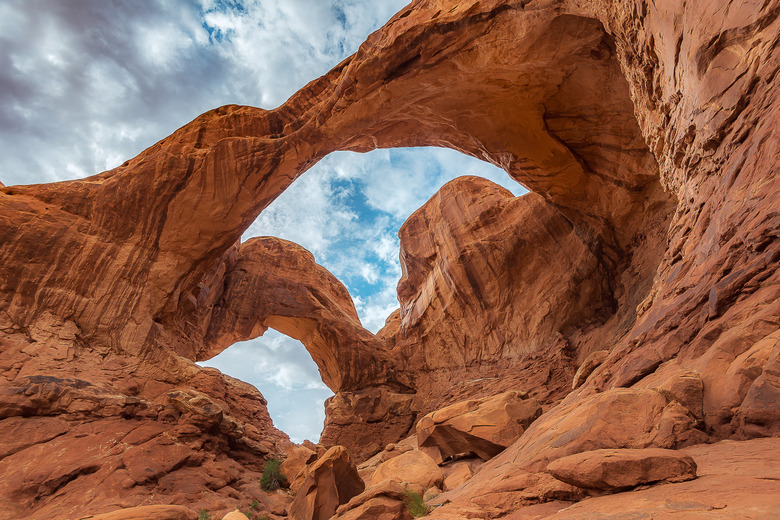What Is The Difference Between Erosion And Deposition?
The landscapes of the world are built partly through processes of erosion and deposition, carried out by physical forces like a churning whitewater river, the longshore drift of coastal currents, a gargantuan glacier or a howling wind. Striking opposites of each other – erosion taking materials away, deposition placing them somewhere – they are always acting in concert.
Erosion
Erosion
Erosion is a process of geological denudation, which involves the breakdown and transport of rock materials. Two other kinds of denudation often work ahead of erosion: weathering, the fragmenting of rock by physical, chemical and biological means; and mass wasting, wherein gravity begins pulling the rubble of weathering from its source. Erosion moves this material more substantially, often across long distances, via agents such as running water, glaciers and wind.
Deposition
Deposition
Deposition is the "yin" to erosion's "yang." At some point, an agent of erosion drops part or all of its load of rocks and sediments. Such depositions occur, for example, when a river loses some of its carrying power, as when its gradient or discharge diminishes. Glacial deposits might mark the site where the great ice body began retreating or where winds carried and distributed glacial sediment well away from the snout of the glacier.
Erosional Landform Example
Erosional Landform Example
A mature river meanders along its course through active erosion (as well as deposition). On the outer edge of a drainage loop, the fastest currents in the river carve intensely into the banks – a process sometimes dramatically evident when chunks of streamside soil drop into the water and readily on display in beach rivers as they slice through yielding sand. The steep-edged landform that results is called a cutbank, and its repeated retreat allows a river to truly move through time. (Opposite it, on the inner edge of the bend, deposits in slacker water create pointbars.) Streams often eventually starve off tight-wound meanders by eroding a shortcut between the neck of the loop. This leaves an abandoned meander called an oxbow lake. Over time, as this fills in, it becomes a slight depression, colonized by vegetation, known as a meander scar.
Depositional Landform Example
Depositional Landform Example
Such a meandering river travels across one of the major depositional landforms: the floodplain. The looping travels of the river carve out a broad valley within which the active channel is a smaller component. Occasionally the river will spill its banks when its volume increases because of heavy precipitation, rapid snowmelt or any number of other triggers. When it does so, it deposits large quantities of sediment on the floor of the valley, building up a floodplain of rich alluvial soil.
Cite This Article
MLA
Shaw, Ethan. "What Is The Difference Between Erosion And Deposition?" sciencing.com, https://www.sciencing.com/difference-between-erosion-deposition-8673914/. 13 March 2018.
APA
Shaw, Ethan. (2018, March 13). What Is The Difference Between Erosion And Deposition?. sciencing.com. Retrieved from https://www.sciencing.com/difference-between-erosion-deposition-8673914/
Chicago
Shaw, Ethan. What Is The Difference Between Erosion And Deposition? last modified March 24, 2022. https://www.sciencing.com/difference-between-erosion-deposition-8673914/
